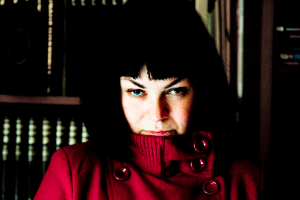Search
To search for an exact match, type the word or phrase you want in quotation marks.
A*DESK has been offering since 2002 contents about criticism and contemporary art. A*DESK has become consolidated thanks to all those who have believed in the project, all those who have followed us, debating, participating and collaborating. Many people have collaborated with A*DESK, and continue to do so. Their efforts, knowledge and belief in the project are what make it grow internationally. At A*DESK we have also generated work for over one hundred professionals in culture, from small collaborations with reviews and classes, to more prolonged and intense collaborations.
At A*DESK we believe in the need for free and universal access to culture and knowledge. We want to carry on being independent, remaining open to more ideas and opinions. If you believe in A*DESK, we need your backing to be able to continue. You can now participate in the project by supporting it. You can choose how much you want to contribute to the project.
You can decide how much you want to bring to the project.

The Cold War, that of Vietnam, activist groups fighting for civil rights and sexual freedom, Woodstock, the belief in rock as a religion, Buddy Holly’s plane crash, teenagers as teenangels, the electric guitar as a phallic symbol, Elvis Presley, the questioning of conventional family values, the symbolic death that (according to the hippies) occurs at thirty, the self-destructive impulses of the rock era, the cover of the first record by Velvet Underground designed by Andy Warhol, the controversial death of Jim Morrison, the appropriation of images extracted from documentaries, the news and adverts, strobe lights, destroying musical instruments live on stage, the death of Jimi Hendrix, music’s subversive potential, re-appropriating public space, the Stonewall riots, LSD, the vindication of discos as a cultural spaces, the AIDS crisis, racial discrimination in North America. All of these subjects could form part (or not) of a love song. .
The exhibition “This is not a love song” carries out a detailed survey of over fifty years of the relation between pop music and video art. With the immense majority of the pieces being audio-visual in nature, it is organised around five thematic lines: “Art in Pop/Pop in art”, “Hysteria and religion”, “Not musicians v Not artists. Rock and conceptual art”, “Rock and its double. Pop music as a tool set” and the “Politics of dance music”. Amongst the numerous references, already familiar names like those of Dan Graham, Tony Oursler, Andy Warhol, Douglas Gordon or Nam June Paik. Works, the subversive potential of which ended up being absorbed by the institution but, which in these times, when society is witnessing how the civil rights and liberties, that cost so much to achieve many years ago, are diminishing, mean more than ever.
“Rock my Religion” by Dan Graham is the reference. Conceived initially as an article that establishes parallels between patterns of behaviour derived from the influence of rock and the repercussion of the religious dogmas in some North American communities of the 17th century, like the Shakers, Rock my Religion proposes an analysis of the history of rock, in the form of a visual collage. Its origins, development, consequences and also, of course, its paradoxes and contradictions. If rock supposes a liberation from the family and social parameters that have restricted human behaviour until now, …why is there still no space for women? Dan Graham’s audio-visual essay shows the attempts to overcome these contradictions. Patti Smith appears on screen, stepping up on stage, showing that rock and violence must coexist. She becomes a heroine, a Goddess, the “Mary Magdalene of rock and roll”. The images of her concerts remit in some way back to the mysterious dancing plague that arose in 1518 in Strasbourg, when a case of dancing mania occurred, in which various people died having danced non-stop for a month. Dan Graham doesn’t talk about them, but it’s also not necessary. He talks of the religious community of theShakers and of Ann Lee, who was their leader. Images of a hippy commune appear. There is talk of a new way of life, the dissolution of the predominant family structure, of brotherhood and the dissipation of hate. A utopia that was also reflected by Aldous Huxley in his last piece of fiction, “The Island”, published in 1962.
I move through the different rooms of the building in the hope of finding an answer. What is rock? Rock is subversion, a mask, attitude and aptitude. It is a stance (also a political one), a manifestation, a declaration of principles. It is an emotion counterproposal (or maybe not) to art as a business that Warhol talked about. It is a necessary revolution, and yes, one also immersed in contradictions.
Despite the exhaustive nature of the proposal, I find some pieces missing. I would have liked to see for example, Jeroen Offerman singing “Stairway To Heaven” backwards, ironizing about the possibility that certain songs have hidden satanic messages. But clearly, the subject warrants several exhibitions…

It’s hard for Marla Jacarilla to define herself, though she’s been obstinately trying to, since a few years ago they told her it would be good for her to have an artist’s statement. She makes art (or at least tries to) she writes about film and every now and again reflects on things that usually pass unnoticed. Somehow or other this all comes down to one thing: an obsession for the letters that form words, that then form sentences, that form paragraphs, that form chapters that tell us stories.
"A desk is a dangerous place from which to watch the world" (John Le Carré)